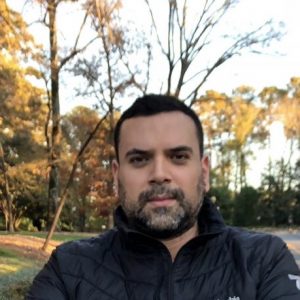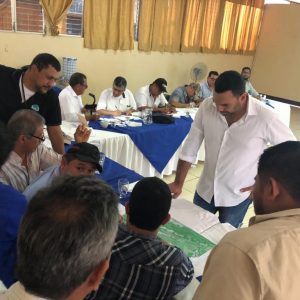Geographer and climatologist Diego Pons joins department faculty
Joshua Zaffos

This fall, Diego Pons, Ph.D, joins the Department of Anthropology and Geography at Colorado State University as our newest Assistant Professor of Geography.
Pons is an applied climatologist with a background in biology and paleoclimatology who graduated from the University of Denver as a geographer in 2017 funded by a Fulbright scholarship. He comes to CSU after spending the last two years as a Postdoctoral Research Scientist fellow at Columbia University. There, he worked at the intersection between climate and society co-developing seasonal and sub-seasonal forecast systems to support decision-making processes at the farm level in rain-fed agricultural landscapes in Latin America.
His research in mountainous regions of Mesoamerica has been funded by the National Science Foundation, including climate reconstructions in tropical settings using tree-rings. He uses the climate information at different timescales (from months to millennia) to investigate historical and future human-environment interactions and the implications to policy-making and development. His research interests are dendrochronology; climate variability and change; seasonal to sub-seasonal climate forecasts; climate impacts on agriculture; climate-health-migration interactions and satellite-derived vegetation monitoring.
We caught up with Pons to hear more about his research, what it’s like to move cross-country during a pandemic, and how he takes his coffee.
How has it been moving and getting ready to teach during the pandemic?
Getting ready to teaching not one but two classes is stressful. Doing it a week after your previous job ends is hard. Driving from New York all the way to Colorado with everything you own is exhausting. Doing it all in the middle of a pandemic is crazy. Yet, teaching is what I love and the experience is worth every step of it!
What are you most excited about in coming to CSU?
The pragmatism embodied in this land-grant institution and its connection with people, which are interrelated.
What makes geography and related disciplines including paleoclimatology so relevant today?
Having historical records can help us understand natural climate variability and put in context current climate changes. It can also help us assess climate models’ performance by evaluating how good these models can reproduce historical records. In other words, paleoclimatology can help us improve future climate projections.

You study dendrochronology (tree rings) and other proxies and measures of climate changes. What can these measures teach us about human impacts on the environment over time?
Tree rings can help us understand processes like ENSO (El Niño-Southern Oscillation) and determine how they have behaved in the past. This is very relevant because current seasonal forecasts use sea surface temperature as a predictor for climate in many regions of the world. Yet, ENSO is not stationary, meaning that its mean and variance are not necessarily constant over time. Tree-rings can tell us how ENSO behaved in the past on how it affected other regions of the world.
What type of research projects do you hope to continue and launch?
I want to continue to use my applied climatology lab to use climate information at different spatial and temporal resolutions to solve problems that society might be facing in the near future.
You study how climate change and geography affect coffee farms and other agriculture in Latin America. How has climate been affected in this region when looking at the historical records?
There are three stories to tell here.
One is that of precipitation. Overall, we have seen records of slightly increasing accumulated precipitation. On the ground, farmers report that precipitation totals have either remained the same or increased but that the timing of the rainy events has changed to more extreme ones.
When it comes to temperature, the records show a steadily increasing trend since the 1970’s with incremental increases of up to 1-degree C already happening in some parts of the country compared to the last 30 years.
The third story is that of increased evapotranspiration, which brings precipitation and temperature together. This increased evapotranspiration has profound effects on agricultural landscapes.
What are people’s biggest misperceptions or misunderstandings about tropical coffee-growing systems and agriculture?
Well, Mesoamerica produces 25% of the coffee we consume. It is mostly small-holder farmers currently struggling with low market prices and high costs. I think peoples’ misperceptions might be associated with the coffee they buy. It matters to know where your coffee is coming from and how it is produced (let’s say a highly biodiverse system holding carbon storage under shade management) versus a full-sun, less-diverse system. People don’t necessarily realize that when they make a selection at the market for a sustainably-produced coffee it matters.

You grew up in Guatemala. What makes this topic especially important for you?
Coffee in Guatemala is closely related to historical land-grabbing processes. Nowadays, up to 80% of the 125, 000 coffee farmers registered at the National Coffee Association are small-holder agriculturalists. They need access to the best available climate information translated and transferred to them in a way that it can inform adaptation activities. I like to be able to produce and co-produce climate information for agricultural purposes. To me, it matters a lot for food insecurity and poverty relief.
What is your perfect cup of coffee?
No sugar, no cream. My all-time favorite is that of Huehuetenango (a highland region in western Guatemala). It has won the Cup of Excellence many times! High acidity and nice body!